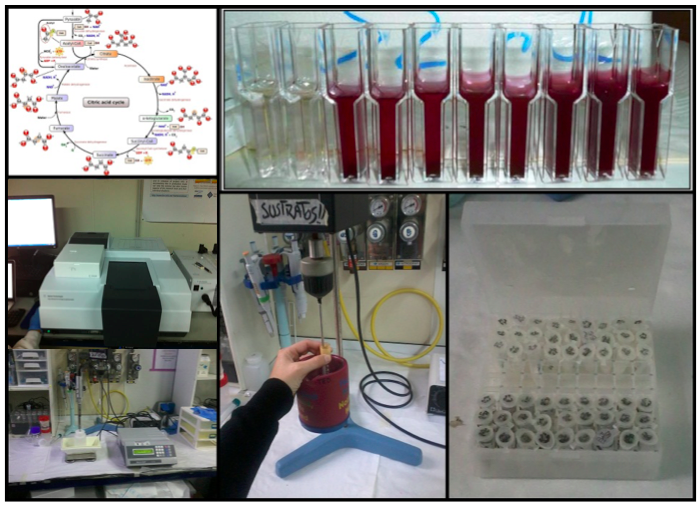Ph.D. Program in Oceanography and Global Change at the Canary Islands, Spain
Our two EOMAR research lines, Biochemical Oceanography and Marine Ecophysiology, provide reciprocal support for each other. Biochemical Oceanography focuses more on the organism-biochemical impact on the ocean while Marine Ecophysiology focuses more on the ocean’s impact on the organism. Biochemical Oceanography develops the enzymatic proxies for the ocean processes of respiratory CO2 production, O2 consumption. Marine Ecophysiology uses these proxies to investigate the factors that control plankton carbon (C) and nitrogen (N) metabolism. Both research lines of the EOMAR group purposefully employ a team concept in pursuing its scientific objectives. Biochemical Oceanography: (1) philosophically considers and builds on the biochemical principles underlying bio-ocean processes to develop mathematical models of plankton respiration and productivity; (2) seeks to define the biochemical kinetics behind the chemical changes in seawater; and (3) develops new methods and concepts for investigating, mapping, and understanding upwelling of ocean waters, O2 minimum zones, and movements of C and N through ocean ecosystems. Specifically, this research line studies the first-principles, the kinetics, of the enzymatic reactions that control key bio-ocean processes. Currently, Biochemical Oceanography focuses on respiratory O2 consumption, potential respiration (respiratory electron transport (ETS) activity), autotrophic new production, biological NH4+ production, respiratory CO2 production, the enzyme activities of isocitrate dehydrogenase activity, NADH-dehydrogenase (Complex-I), L-glutamate: NADP+ oxidoreductase, nitrate reductase, the micro analysis of protein, and plant pigments. The EOMAR team’s recent advances have been: (1) the introduction of a new concept, the Nutrient Retention Efficiency (NRE); (2) the calculation of a new ocean metric, the Heterotrophic Energy Production (HEP) in ocean water columns; (3) the calculation of benthic respiration, NH4+ production rates, and C and N burial from water column respiration and NH4+ production profiles; (4) demonstration that the curvature of water column respiration profiles controls the vertical C-flux and NRE; and (5) the construction of ocean cross-sections of vertical C-flux from ocean respiratory CO2 production profiles.




